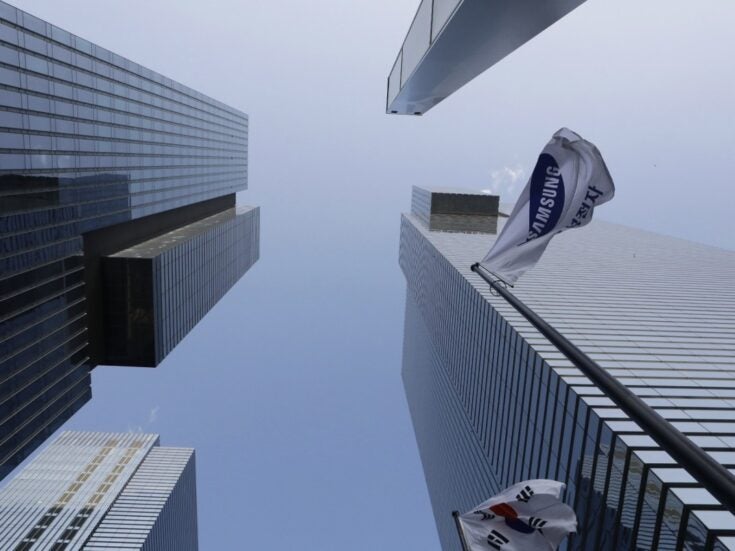They tell you how much your mates are really worth. No wonder we’re all obsessed by rich lists, says Martin Vander Weyer
They tell you how much your mates are really worth. No wonder we’re all obsessed by rich lists, says Martin Vander Weyer
‘If you know how rich you are, you’re not rich,’ is a pearl of wisdom often attributed to Imelda Marcos. Yet, such sentiments simply don’t cut much ice these days – because however vague the mega-rich may pretend to be about the value of their assets, there’s always someone else ready to the maths for them.
Tabulating the statistics of personal wealth has become a respectable profession. ‘Rich Lists’ – led by those published by Forbes magazine in the United States and The Sunday Times in London – have become essential reading and conversational fodder.
The Canadians, the Australians, the Danes, and the Dutch have them; the Irish are mad for them. Wherever new wealth is blossoming, those who like to be in thought ‘in possession of a good fortune’ (to borrow Jane Austen’s phrase) are falling over each other to make sure they feature in the indices.
It was not always like this. Twenty years ago, putting a n umber on someone else’s bank balance and publishing it was widely regarded as an intrusive and hostile journalistic act. No self-respecting old-money landowner or tycoon would have dreamt of co-operating with the list of compilers, any more than they would have invited Hello! magazine to photograph them in their stately drawing rooms.
What changed? Is it unhealthy that 21st Century society has abolished respect for financial privacy, and is so materialistic that it takes pleasure merely from reading lists of names with sums of money set against them? Or is the list obsession a healthy expression of admiration for entrepreneurship and social mobility, a sign that envy has been replaced by aspiration? In the age of the television quiz show Who Wants To Be A Millionaire?, the final answer seems to be that we all do – and we’re fascinated to know who already is.
How people react to rich lists clearly has something to tell us about changing social and economic moods. It is instructive to trace their history; perhaps surprisingly, it does not begin in the Raegan-Thatcher era, but much earlier.
In 1845 – at a time of rapid, railway-driven expansion of the American economy – Moses Beach, editor of The New York Sun, published Wealth and Biographies of Wealthy Citizens of New York, a pamphlet which set out to list every fortune in the city that was thought to surpass $100,000: John Jacob Astor came top with $25 million. In 1872 – likewise a time of fast-rising industrial prosperity for Britain – The Spectator in London published a list of wills worth more than £250,000; the editor observing afterwards that it had ‘obtained more readers than the best essay on politics we ever issued… If we could publish a similar one of the living rich, our publishers would be unable to meet that day’s demand’.
Moving forward to New York in 1918, the beginning of the prosperous decade that preceded the Great Crash, we can see a pattern emerging. It was then that BC Forbes, founder of the magazine which still bears his surname, published a list of the 30 richest Americans, based on speculation by ‘leading bankers’ and scrutiny of income tax filings.
John D. Rockefeller (who once said ‘Do you know the only thing that gives me pleasure? It’s to see my dividends coming in’) won by a mile, with a $1.2 billion fortune and an income of ‘$114,155.25’ per hour; America’s richest woman was declared to be EH Harriman, widow of a railway tycoon, with $80 million.
It was fascinating stuff, jauntily presented. But like the Wall Street boom, it did not endure, and it was not until 1982 that BC’s son, Malcolm Forbes, founded the modern rich list industry by publishing the first Forbes 400 table of America’s wealthiest.
In the new mood of the Reagan presidency, this was an instant success, hugely boosting Forbes’s circulation. It also attracted international attention: in London, Lonrho tycoon Tiny Rowland suggested to Ivan Fallon, City editor of The Sunday Telegraph, that he ought to attempt something similar.
One of Fallon’s junior reporters, Philip Beresford, now the doyen of British rich list compilers, takes up the story: ‘Two or three hundred names were cobbled together; each reporter was given 30 and told to contact them and check the figures. It caused absolute uproar. The Sainsburys got straight on to Scotland Yard.
When someone rang the Duke of Devonshire and asked him if £500 million was about right, he exploded: “What on earth does Hartwell [Lord Hartwell, the then proprietor of the Telegraph titles] think he’s doing?” Hartwell went into White’s and met a barrage of aristocrats telling him how appalling it was. So he ordered us to stop.’
The concept was dormant for several years, despite the rapid increase of new wealth in the mid-1980s boom. It was not until 1989 that Fallon and Beresford, by now at The Sunday Times, took it up again. Beresford’s first list of 200 names still generated animosity from those who appeared in it, and sniffy reactions from some readers.
It was also far from comprehensive, because little or no information was available on many wealthy families; valuing their private business interests involved poring over barely legible microfiches at Companies House in London; valuing their private art collections was impossible.
But as the publication of the list became a familiar annual event, opposition fell away and the compilers’ task gradually became easier – both because more subjects were willing to co-operate, and because technology improved. Other newspapers got into the game, including The Mail on Sunday and the left-leaning Observer, which produced an ‘A to Z of the Young Rich’.
In terms of public responses, says Bereford, ‘the Thatcher years prepared the groung, but the National Lottery was my great saviour’: when the weekly draw was launched in November 1994, everyone in Britain suddenly had the chance to be rich, and unleashing a new burst of inquisitiveness about the already-rich.
‘Talking about wealth became normal’, he says; the transition was completed with the arrival of New Labour, apparently free of socialist baggage, talking positively about entrepreneurship, and back by a coterie of hip millionaires. The lists became a symbol of ‘the final triumph of capitalism’.
Still, there were those who strove to stay out of them. Octav Botnar, the man who controlled Nissan car sales in Britain for 20 years, tried to persuade Beresford that he was not the ultimate beneficiary of the businesses he appeared to own – and spent the rest of his life in Switzerland as a fugitive from justice, having allegedly defrauded the Inland Revenue of more than £100 million.
The accounts of other well-known people were just too complex to unravel. In 1998, Beresford put Mohammed Al Fayed at £1.2 billion, after knocking off ‘at least £300 million for any debt that may be lurking’; in 2005, the figure for the Harrods owner’s net worth had shrunk to £457 million.
The internet made life much easier: Beresford uses the same software as the Inland Revenue – a package called FAME (Financial Analysis Made Easy) – to trawl through family companies looking for those with big profits and assets, but small debts. Nowadays, he says, the fortunes that are hardest to value are the oldest – those of the landed aristocracy – and the newest made by hedge fund managers. He thinks there are probably 1,000 landed families in Britain worth more than £100 million, ‘but I’ve still only found half of them’.
Those he has found often urge him to reduce his estimates: he enjoys ‘a charming annual correspondence’ with the Duke of Buccleuch £65 million last year) about tax rates and the impossibility of turning priceless artworks into cash. As for the low-profile, offshore hedge fund fraternity, they do not want their true profits to be known by anyone.
In between these ends of the spectrum, however, exists a multitude of status-conscious new money eager for the kudos of appearing in the lists. Nowadays, Beresford constantly fends off calls from PR people and family representatives offering information that might secure a place. Why would anyone do that?
Perhaps to score points off business rivals or to persuade the bank manager to add a couple of zeros to the overdraft limit; perhaps just for sheer vanity. Take the example of Real Estate tycoon Donald Trump, for example, who is suing New York Times reporter Timothy O’Brien, for suggesting that he might only be worth $150-250 million, and not the $2.7 billion credited to him in the 2005 Forbes 400.
And yet, there are so many reasons why it’s sensible not to tell the world exactly how much you are worth. The recent theft of art and antiquities from the Wiltshire home of Harry Hyams (valued at £80 million) is a reminder of one of risk of conspicuous wealth. Others include massive divorce settlements, kidnapping, and being beset by begging letters.
If you want to enjoy your wealth in tranquillity, stay out of the gossip columns, drive a second hand Volvo, and keep your Canaletto in a cupboard. If your enjoyment comes from knowing that other people know you’re richer than the next multi-millionaire, make a list of everything you own and send it to Beresford. It’s one of the choices that money buys you in the world – but it’s also a reminder of what money can’t buy. As rich list creator Malcolm Forbes once said: ‘Too many people overvalue what they are, and undervalue what they’re not’.







